With thousands of NFT projects out there, it’s hard for new NFT collections to stand out from the crowd. Discover 9 proven steps you can use to launch a successful NFT collection from start to finish. Learn NFT promotion strategies, blockchain & marketplace options, examples of successful NFT collections, and how you can launch your NFT project with confidence.
Everyone from Disney to Ticketmaster to the NBA released NFTs this past year. Alongside these big players, NFT collections by artists, developers, and creators of all kinds are thriving and seeing major success.
But for every highly successful NFT collection, there are dozens that fail to capture anyone’s attention. For every issue-free NFT drop, there are dozens that suffer technical difficulties, website crashes, and exploitation by bots and attackers.
So how can you avoid launching an NFT collection that falls flat?
How can you promote your NFTs to build hype and community?
How can you launch a successful NFT project?
From over a decade working with product releases in ticketing, electronics, and sneakers, we’ve learned a lot about successful drops and launches. And over the past 2 years, we’ve worked with many high-profile NFT projects to ensure their drops are fair and problem-free.
In this article, we draw on these insights and showcase success stories from some of the biggest NFT projects to outline the key preparations you need to make and the tough questions you need to answer to start your NFT project and pull off a successful NFT launch.
Here are the 9 steps successful NFT projects nail that you should consider for your NFT launch:
Let’s start with the assumption you already have the assets you want to turn into NFTs. Whether it’s images, videos, avatars, or merchandise, there’s one core question you need to answer: why should people buy your NFTs?
To answer that, you need to ask yourself:
- Why are my NFTs significant?
- How are they different from other NFTs?
- Why will people be trying to get their hands on them for years to come?
- What value do they give my customer?
- How exclusive are they?
Successful NFT projects have these questions clearly answered before anything else. And the most successful projects tell a compelling story to ensure their audience understands the same value propositions.
Bored Ape Yacht Club (BAYC), for example, isn’t just 10,000 images of different apes. It was launched with a narrative and a vision. The Apes exist in a future where early crypto investors, wealthy beyond belief, gather at a yacht club with like-minded Apes.
The project had a roadmap which detailed its future and what it would give back to early buyers. It had a professional website, a fun and lighthearted brand voice, and was committed from the outset to creating benefits for an exclusive community.
BAYC created a world that people could only join by buying their NFTs.
This story, voice, and vision is what captured people. And the commitment to the vision and community drove continued value.
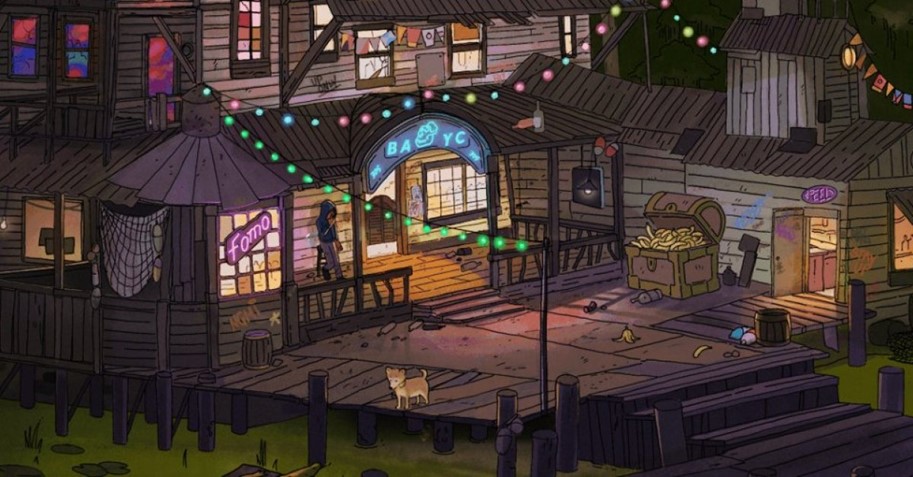
So how do you start an NFT project?
Start with the story you want to tell. The value you want to deliver. The journey you want to take buyers on. Start by answering why anyone should buy your NFTs.
RELATED: How Major Retailers Are Using NFTs To Boost Sales & Loyalty
When planning how to start an NFT project, there are two early decisions that are vital to its success: where you’ll sell your NFTs, and which blockchain you’ll mint them on.
While most NFTs are minted on Ethereum and sold on OpenSea, there are many larger projects which benefit from using alternative blockchains and even creating their own websites or marketplaces.
Selling NFTs from your own website gives more control over the NFT launch, allowing you to capture more revenue and often saving fans from the high gas fees associated with Ethereum. But it also involves more work and more upfront costs.
Most NFT marketplaces have different benefits and customer bases, so it’s worth exploring your options before you choose where to launch your NFTs. Below is a list of some of the most popular marketplaces.
Top NFT marketplaces
- OpenSea: The first and largest NFT marketplace
- Nifty’s: An eco-friendly marketplace selling NFTs by big brands and creators
- Foundation: A curated NFT marketplace planning to build a new creative economy
- MakersPlace: An NFT marketplace for digital creators
- Rarible: A community-owned marketplace which uses its own currency
- WAX digital: An NFT marketplace that releases exclusive NFTs by global brands and artists
Choosing a marketplace and choosing a blockchain go hand-in-hand. Some marketplaces only sell Ethereum-based NFTs, while others have their own blockchains, sidechains, and currencies. Below is a list of some of the largest blockchains.
Top NFT blockchains
Each blockchain has different benefits, proponents, and selling points. Some are more environmentally friendly, others have lower gas fees, and some offer interoperability (the ability to transfer your NFTs between blockchains).
Before minting your NFTs, dig deep into the different marketplace and blockchain options available and choose what’s right for your project.
Once you’ve chosen your blockchain and marketplace, it’s time to write your NFT smart contracts.
Smart contracts are crucial to the value proposition your NFT collection gives buyers.
Decisions that need to be made include:
- Will your NFTs live on-chain or off-chain?
- Will you take royalties from resale of the NFTs?
- What is the maximum mint amount?
- Will you mint the NFTs, or will you allow the public to mint them?
- What are the built-in features such as randomness, rarity, and voting rights?
- Is there any additional utility built into your NFTs? Do they double as tickets to an exclusive event? Do you give owners the intellectual property rights to the NFTs? Can they access exclusive media using the NFTs?
These early decisions matter because features like royalties, rarity, and mint amount are fixed after the initial minting.
Even for features that aren’t fixed, you should establish what your NFTs will offer and include from the start. If not through code in your smart contracts, then through copy on your website and information in your whitepaper.
Gary Vaynerchuk, for example, outlined all the features of his highly successful VeeFriends NFTs ahead of time. Every VeeFriend doubles as a ticket to the exclusive VeeCon conference.
Other VeeFriend NFTs included “Access Tokens” giving owners unique experiences with Gary himself. Or “Gift Tokens”, which entitled owners to several random gifts each year.
The utility was built into the VeeFriends NFTs from the start. And by implementing a 10% royalties function, Gary has made an estimated $150 million just off resale.
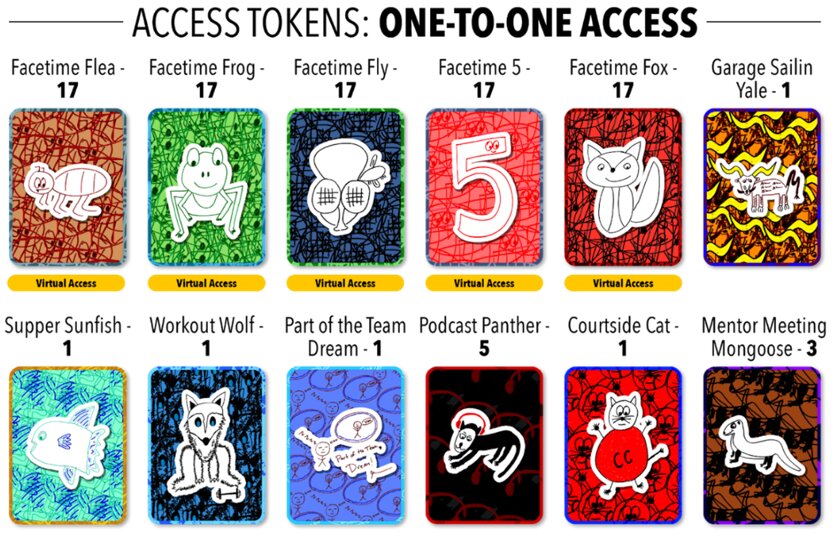
NFT launches are all about building excitement and community. The more excitement surrounding your NFTs, the more valuable they’ll become.
So once you have your NFTs ready for release, it’s time to get people excited about them.
NFT promotion strategies
- Establish social media channels (Twitter and Discord are the main areas NFT enthusiasts spend their time, but it’s also worth considering Instagram, Reddit, and Telegram)
- Reach out to NFT influencers and consider donating NFTs to them for support
- Run giveaways
- Engage with the community
- Create a professional website
- Create promotional videos, photos, and written content
- Create a presale sign-up form and mailing list
- Add your project to the NFT calendar
There’s no better NFT launch result than a quick sell out. It’s the NFTs that sell out fast that make headlines, capture the attention of NFT enthusiasts, and realize increased value on the secondary market.
But selling out isn’t possible without first generating an audience that believes in the project. So spend the time leading up to the release getting as much visibility for your NFTs as possible.
Ensure that when you get website visits, Twitter follows, or new members to Discord channels, you’re delivering fresh and engaging content and product teases to get fans excited and ready for launch day.
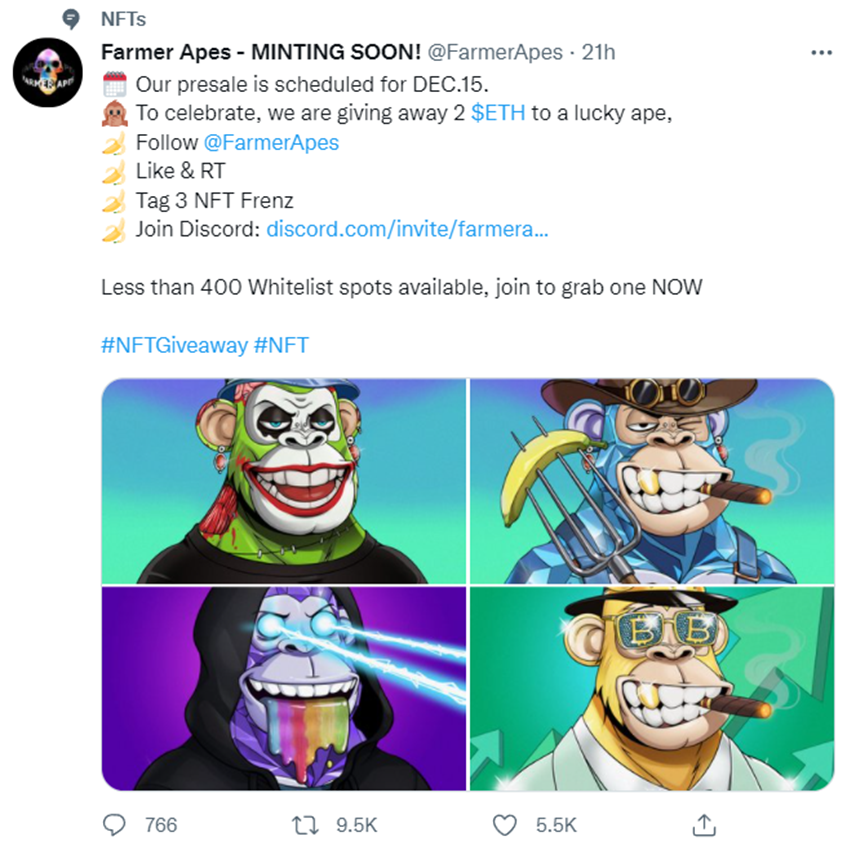
The NFT giveaway, for example, is popular because it works. People are happy to use their platform for a chance at free NFTs or ETH. Just search up #NFT on Twitter and you’ll see countless posts like the one above, all with hundreds or thousands of comments, retweets, and likes.
RELATED: 47 NFT Ideas & Examples: The Wild, the Weird & the Wonderful
Fairness is a hot topic in the NFT space. With the NFT economy being community and creator driven, creating a fair NFT launch is an important way to show customers you care and your project can be trusted.
The co-creator of Ethereum, Vitalik Buterin, wrote a thought-piece on achieving fairness in product launches, outlining the five goals of an ideal NFT launch:
- Fairness: don't completely lock low-income people out of participating, give them at least some chance to get in. For token sales, there's the not quite identical but related goal of avoiding high initial wealth concentration and having a larger and more diverse initial token holder community.
- Don't create races: avoid creating situations where lots of people are rushing to take the same action and only the first few get in (this is the type of situation that leads to the horrible auctions-by-another-name that we saw above).
- Don't require fine-grained knowledge of market conditions: the mechanism should work even if the seller has absolutely no idea how much demand there is.
- Fun: the process of participating in the sale should ideally be interesting and have game-like qualities, but without being frustrating.
- Give buyers positive expected returns: in the case of a token (or, for that matter, an NFT), buyers should be more likely to see the item go up in price than go down. This necessarily implies selling to buyers at below the market price.
In these criteria, Vitalik stresses that giving a fair and simple NFT launch to as many people as possible is the best way to create community engagement and enthusiasm.
A fun and fair NFT drop creates a large and diverse holder community who believe in your project, which is key to long-term success.

BAYC call bonding curves a Ponzi scheme, emphasizing their fair fixed pricing model.
Among Vitalik’s suggestions for a successful and fair launch is the model:
Each participant (verified by proof of personhood) can buy up to X units at price P. If they want to buy more, they can do so in an auction.
This is the basic format many high-demand product releases follow, from ticketing, to sneakers, to PS5 and AMD graphics card drops. It’s that little “max one per order” text you see on ecommerce and ticket sites. It essentially means you can buy one PS5 for $500, but if you want another you need to look for it elsewhere or bid on it on eBay.
Implementing such a model makes it difficult or impossible for crypto whales (people or entities with huge amounts of cryptocurrency) using bots to snatch up a large portion of the NFTs.
By setting purchase limits and authenticating each customer, all users can participate in a fairer drop, and secondary value can be realized for buyers on the resale market.
Avoid gas bidding wars
Even on fixed-price NFT releases, however, projects quickly mirror auctions in the form of gas fees. Gas fees are payments made for validating transactions on blockchains.
As buyers fight over a limited supply of NFTs, they bid against one another on whose transaction will go through. This is called a gas bidding war, and it can drive up the cost of NFTs dramatically.
While gas bidding benefits the miners, customers often end up spending more than expected, or are outbid by whales and bots.
Vitalik calls this auction-by-other-means, and it’s more common than many realize.
Research from Paradigm shows that during The Sevens NFT drop, gas prices peaked at 12,246 gwei.
This means that the median buyer paid 1.49 ETH per NFT, when the price of the project was set at 0.07 ETH. That’s a 2,000% price increase from gas fees.
Paradigm’s chart below shows the Ethereum gas fees in the month of September 2021. Each major spike in fees is associated with a high-interest NFT project.
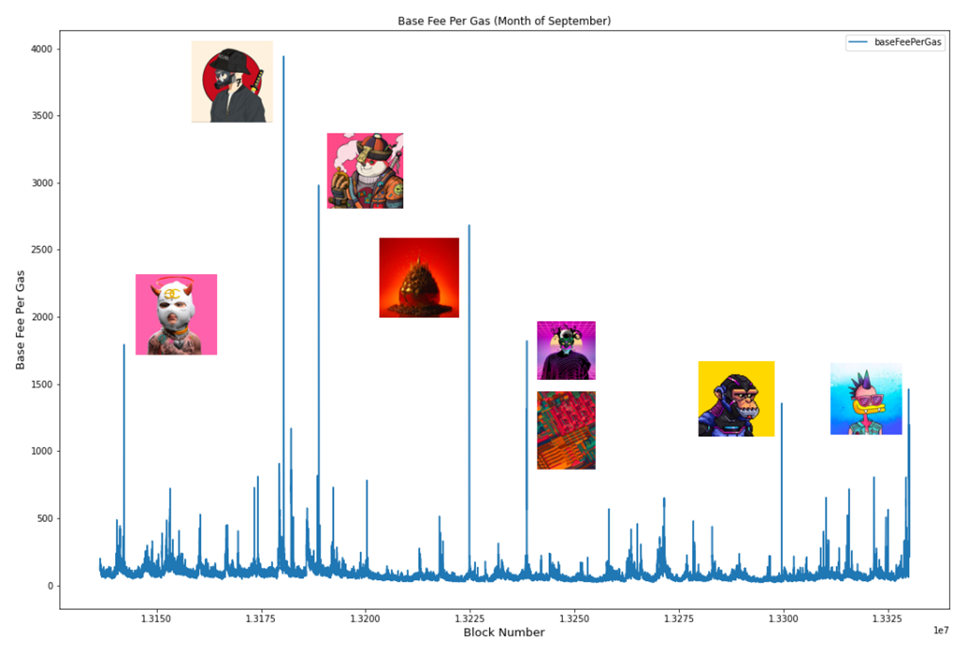
Gas bidding wars mean that even for NFT collections that strive for fairness and diversity by selling at a low initial cost, customers end up competing over NFTs through gas bidding. Many get priced out of buying, others lose gas bidding wars, and others leave frustrated, having spent more than they intended or than was advertised.
Virtual waiting rooms have made a splash in the NFT market because they enable fairness while also fulfilling Vitalik’s criteria of avoiding races and creating fun for customers.
They work by redirecting website visitors from a site into a customized waiting room. Customers who arrive on time for an NFT launch are given a randomized place in queue and are then throttled back to the website to purchase when it’s their turn.
By limiting the traffic outflow from waiting room to transaction page, NFT launches can spread transactions out over a larger period and avoid gas wars among customers.
This virtual waiting room solution is used by major NFT providers like NBA Top Shot, Nifty’s, Topps, DraftKings, and Funko Pops.
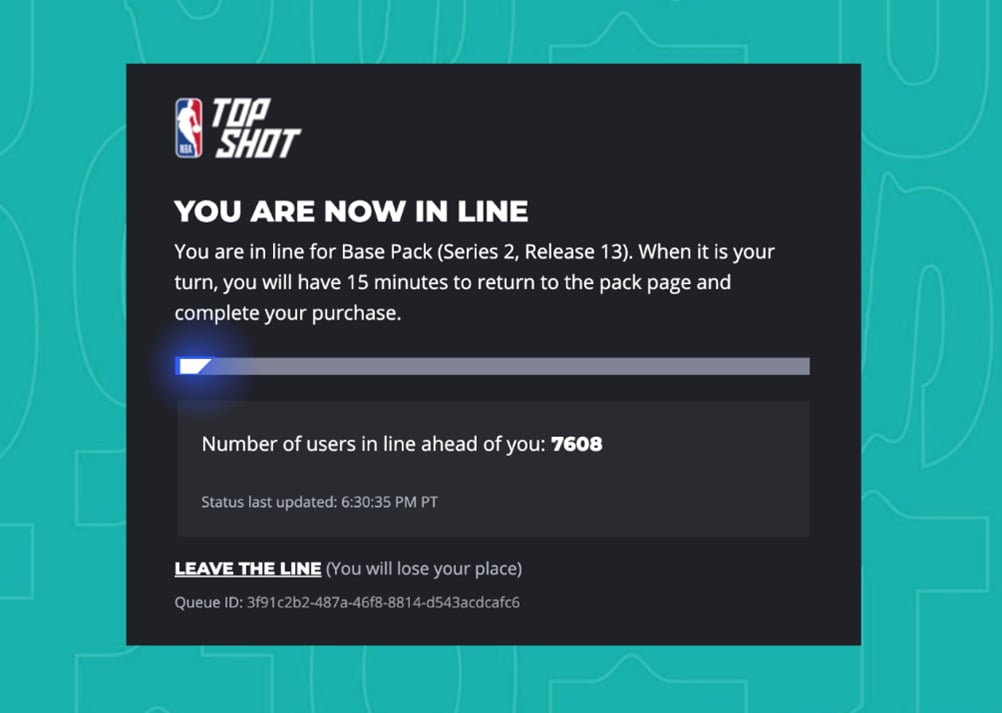
The virtual waiting room is also used to keep websites from crashing and payment gateways running smoothly, offering the added benefits of fair randomization, capturing the marketing hype of queues, and removing shopping bots from sales.
RELATED: Customer Loyalty in Ecommerce: The Surprising Benefits of Online Fairness
A key element of making the NFT space fairer is proof of personhood (PoP). As the name suggests, PoP means each participant is required to prove they’re a real person.
PoP mirrors the concept of know your customer (KYC) that’s compulsory for financial institutions, high-value art sales, and cryptocurrency exchanges.
PoP and KYC allow businesses to authenticate each customer, so savvy users can’t exploit the sale using shopping bots, proxies, or multiple devices.
RELATED: 5 Essential Considerations For Your NFT Launch: IP, Financial Regulation & Bots
KYC is a requirement for almost all financial institutions, from banks to stock brokerages to cryptocurrency exchanges. It’s used to prevent illegal activity like money laundering, funding of terrorism, and tax evasion.
NFTs aren’t currently regulated by KYC, but with the market growing fast, and concerns about scams and money laundering, many suspect they soon will be.
Having worked with banks, tax agencies, and crypto exchanges, Queue-it is highly familiar with KYC and can help support fairness and regulatory compliance.
Visitors who enter virtual waiting rooms for NFT drops can be authenticated as real individual customers. This is done through bot protection features and enqueue token SDKs with unique user identifiers, meaning only authenticated users can pass through the queue and onto the website.
KYC compliance is important to consider, especially for large NFT projects because it:
- Makes releases fairer by allowing sales to limit purchase quantities to verified customers
- Allows creators to run exclusive drops limited to loyal fans, people who signed up for presale, or existing NFT holders
- Meets KYC compliance standards, so if regulatory changes occur or the project expands, your business is on the front foot
- Prevents server overload (website crashes) and bots by limiting access to verified users
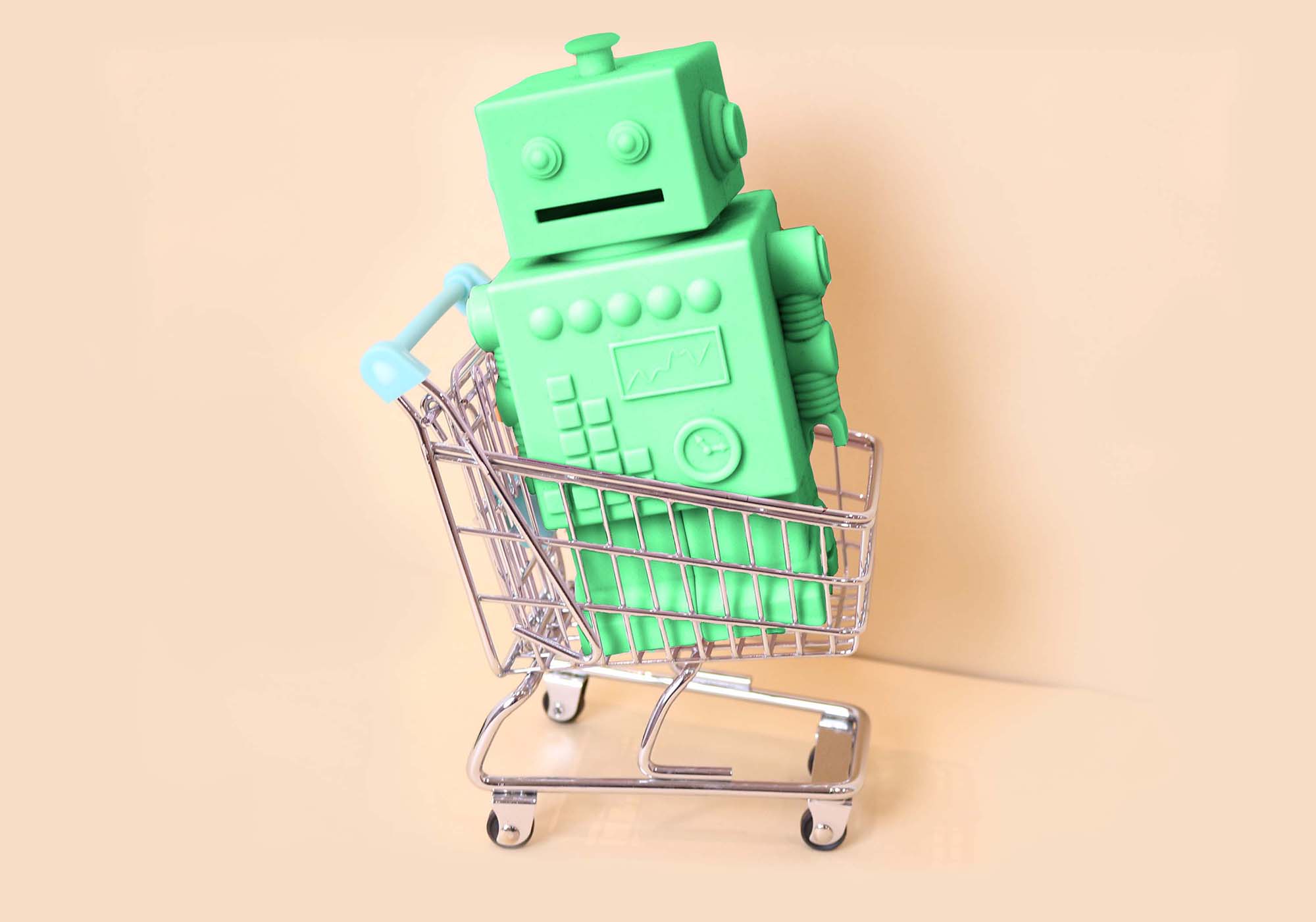
During high-demand product releases, it pays to be prepared. When everything has gone perfectly in your checklist until this point, the drop day can make or break your project.
The drop day is the culmination of all your hard work. It’s payday. When your project will be most visible. When fans are excited and ready. It’s the most crucial day to have your entire team prepared.
This involves ensuring:
- All major partners and third-party services are informed about the drop
- Staff know their responsibilities and have clear channels of communication
- Customer service ready and people are monitoring social media channels
- Technical support is monitoring for issues and have plans in place for quick solutions
- You have a war room, virtual or physical, where staff can quickly gather to solve problems as they arise
Generate hype, deliver fairness & set your NFT project up for success with your free 8-step interactive NFT drop checklist
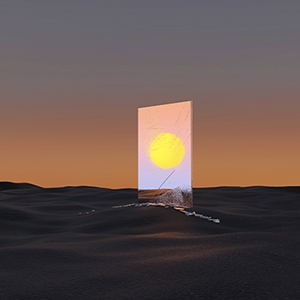
As users flood websites, hyped NFT launches have crashed marketplaces from OpenSea to Christie’s to Makersplace.
All these crashes had one thing in common—the websites weren’t prepared for the traffic surges the NFT drops would lead to.
Throughout this article we’ve discussed the importance of generating hype, but there are also dangers to being unprepared for too much hype. Beyond high gas fees, website crashes are a key threat to prepare against when releasing high-demand NFTs.
RELATED: How High Online Traffic Can Crash Your Site
The level of interest in NFTs is growing fast. In a recent NFT launch by Nifty’s, over 300,000 accounts virtually lined up for a shot at The Matrix Avatar NFTs.
For unprepared websites, 300,000 users is more than enough to bring a sale crashing down. While the launch wasn’t issue-free, Nifty’s managed to sell 100,000 NFTs without charging users gas fees or cancelling and postponing the launch. Where they did face issues, Nifty’s showed their commitment to fairness and the community by giving out free NFTs to those affected.
We asked a representative from Nifty’s how they handled massive demand and dealt with the issues that come with selling at scale:
“Fans of the Matrix were even more passionate than we anticipated, and as a result, the demand surpassed our expectations. We know the launch wasn't exactly what we wanted for our community to experience, but with the help of Queue-it we were able to effectively work on resolving issues and making things right for everyone that stuck with us. On the latter point, we were happy to announce that all Nifty’s users who queued for a Matrix Avatar will be receiving a free “glitch in the Matrix” NFT.”
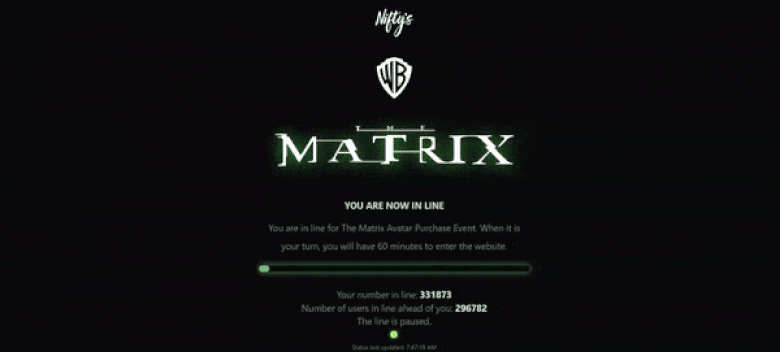
Virtual waiting room for Nifty’s The Matrix NFT drop
As businesses navigate the exciting space of NFTs, many quickly realize the interest in NFTs exceeds the capacity of their websites.
With customers expecting fair, orderly, and problem-free NFT drops, businesses are seeking out new ways to control the traffic surges these drops attract. And virtual waiting rooms are playing an important role in that process.
RELATED: 11 Exciting Trends Shaping the Future of NFTs
NFTs are so exciting because fans and community drive their value. And if you want fans and customers to continue to hype your NFTs, you need to create value that lasts.
VeeFriends, for example, has gone beyond its initial promise to buyers by creating a Pre-Launch Program (PLP).
The PLP lets upcoming NFT projects donate 555 of their NFTs to VeeFriends holders. This not only gives up and coming NFT projects a launchpad, but also allows VeeFriends holders the chance to get free NFTs with each new PLP run.
Since the initial launch of Bored Ape Yacht Club, the creators have given away to holders Bored Ape Kennel Club (free dog NFTs for Apeholders) and Mutant Ape Serums, an innovative process allowing Apeholders to generate a new mutated version of their NFT.
The Mutant Ape serums alone generated millions of dollars in value for Apeholders. The current Mutant Ape floor price is almost 14 ETH (approximately $23,000). For early investors who bought their Ape for 0.08 ETH, they could sell their NFT Mutants and Dogs at a massive markup without parting with their original Apes.
The benefits of these types of innovation are cyclical: creators give value to fans, others see this value and want to be involved, the value of the NFTs grows.
On top of this, when people see the value original holders are getting out of particular NFTs, they’re more likely to participate in the next release. This was the case for both Gary Vaynerchuk and the BAYC creators, with their follow-up releases selling out far quicker than their original ones.
Hear from Nifty's VP of Marketing Jimmy Mouton how Nifty's and Warner Bros. worked together to deliver an exciting The Matrix NFT drop and give lasting value to holders in this clip from our webinar How major brands use NFTs to drive sales & boost loyalty.
In this article, we’ve covered the foundations of a successful NFT collection drop. If you take nothing else away from this guide, consider and answer these seven essential questions for a successful NFT launch:
- How will my NFTs stand out from the crowd and offer value?
- Where will I mint and sell my NFTs?
- What will the smart contracts look like and offer?
- How will I generate hype around my NFTs and build a diverse community?
- How will I create fairness for customers and give everyone an equal chance?
- What kind of regulatory measures do I want to set up for my project?
- How will I prepare my website and staff for high traffic?
With these questions answered, and all the steps on this checklist ticked off, your project will be set up for success. It’s just up to you and your team to execute.
To help you prepare for your drop, we've put together a free interactive NFT launch checklist that'll let you align your collaborators by answering the important questions and ticking off the crucial steps. Get your free NFT launch checklist by clicking here, or follow the link below.
(This blog has been updated since it was written in December 2021).
